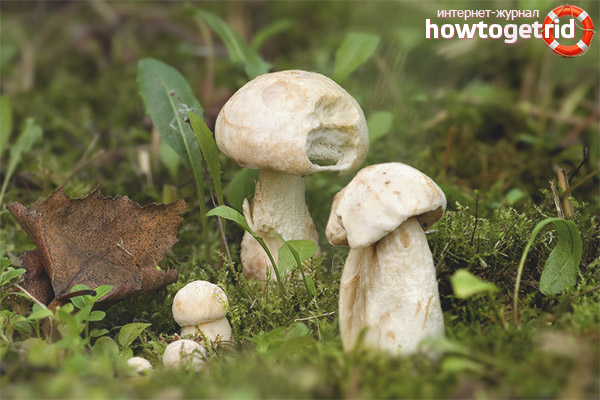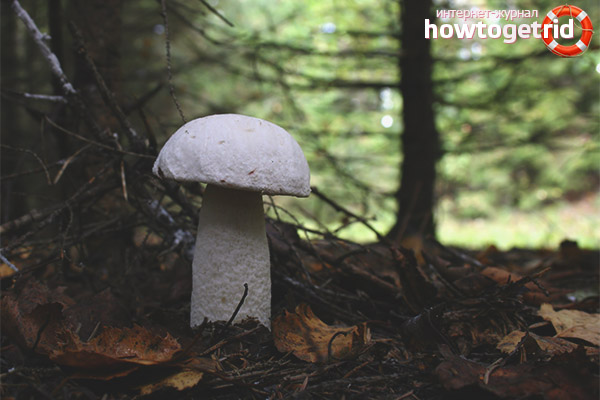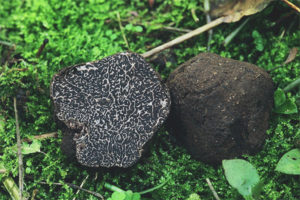The content of the article
White boletus, belonging to the Boletov family, is a tasty and rather rare edible mushroom. This type of mushroom is very popular among fans of quiet hunting, however, due to its rarity, it is listed in the Red Book.
View description
The diameter of the cap of the white boletus varies in a fairly wide range - from 40 to 150 mm. Also quite often there are quite large specimens of the species, the cap sizes of which reach 250-260 mm. At the beginning of development, the hat has a spherical shape, with growth it transforms into a pillow-shaped one.
The color of the hat is white with a characteristic shade (it can be pinkish, brownish or greenish). As the mushroom grows yellow. In addition, the surface of the cap boletus is quite dry, without any growths.
The leg is white in color, club-shaped, at the base has a certain thickening, rather high. The surface is covered with small light scales, which, with the growth of the fungus, acquire a brownish tint.
The color of the tubular body of the boletus has a characteristic white or slightly yellowish color, in overripe mushrooms - gray. The fruit body has a white pulp with a fairly dense structure. I would like to draw attention to the fact that with a break, the mushroom flesh almost instantly changes color - it darkens. The spores are brownish buffy.
Places of growth
The peak of harvest begins with the advent of summer and continues until the beginning of autumn. Although this type of mushroom is rare, however, the boletus is rich in fruiting - it grows in fairly large colonies.
In our country, this type of mushroom is most often found in the central part, Siberia. Also, this species grows in the territory of many European countries (western regions), in the Baltic countries, Belarus. There is evidence that white boletus is growing in North America.
Edibility

Presented to the attention of the fungus is an edible species with high nutritional value. In addition to boiling, the boletus can be pickled, fried, dried, and also eaten raw. Boletus is a mushroom that is compatible in cooking with other types of boletus.
Similar views and what to look for
The closest related species is the red boletus. The cap sizes of representatives of this species reach 150 mm. At the very beginning of development, it may seem that the hat is pulled over the body of the leg, but over time it straightens. The pulp of the fruiting body is quite dense, white. When kinked, it immediately darkens. The layer of the tubular body in young mushrooms has a white color, with aging it turns gray, becomes thicker with characteristic irregularities. Spore powder has a dirty yellow color.
The leg of the closest such kind of species as boletus red reaches, as a rule, 150 mm long, up to 50 mm wide. Cylindrical, thickens at the base. The main color of the legs is white, at the bottom with a greenish tint. The surface is densely dotted with small soft scales, which makes it feel velvety to the touch.
Another related species is the yellow-brown boletus, which is also known as the chanterelle. The cap sizes of representatives of this species reach 250-300 mm (diameter is implied), its color can vary from pale yellow to rich red. At the beginning of development, the hat has a spherical shape, with the growth of the fungus the latter becomes more convex. The pulp is quite fleshy, with a break it acquires a purple hue, after which it quickly darkens. Note that the flesh practically does not have any characteristic smell and taste.
The color of the tubular body is light (it can be either white or gray), the pores are rather small, the spore powder itself is dirty yellow with a brown tint. The length of the legs reaches 180-200 mm. The fruiting season is from mid-summer to mid-autumn. This species is edible, in taste it is somewhat inferior to white boletus.
Video: white boletus (Leccinum percandidum)










Submit